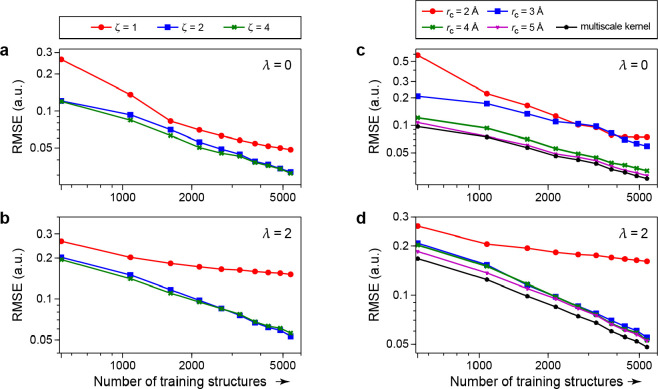Figure 41.
Learning tensorial properties. The figure shows learning curves for the λ = 0 (top) and λ = 2 (bottom) components of the per-atom polarizability for the QM7b dataset.352 Polarizabilities were calculated using CCSD, and the test set in all cases consists of 1811 molecules. (a, b) Effect of the kernel exponent. Nonlinear (ζ = 2, 4) SA-GPR SOAP kernels yield much better asymptotic learning performance than the linear (ζ = 1) form. A radial cutoff of rc = 4 Å is used throughout. (c, d) Effect of the environment cutoff radius. Polarizability is a property that depends strongly on long-range correlations, and so a large cutoff distance is usually beneficial. However, a multiscale kernel built by combining kernels with different cutoffs, with weights that are optimized by cross-validation, yields a small but consistent improvement over each of the individual models. Adapted from ref (99).

